
10 Popular Types of Pasta Sauces and What to Pair Them With
Pasta dishes are loved worldwide, and the sauce makes all the difference. Here are 10 popular pasta sauces and tips on what types of pasta, ingredients, and wines pair best with each.
Food adulteration is a concerning issue around the world. It can involve the addition of harmful substances to food products, ranging from water in milk to synthetic colorants in spices. While some adulterants can be harmful to health, many are not immediately detectable by the naked eye. The good news is that several simple home tests can help identify if your food is adulterated. Here’s a guide to the most common food adulterants and the methods you can use to detect them.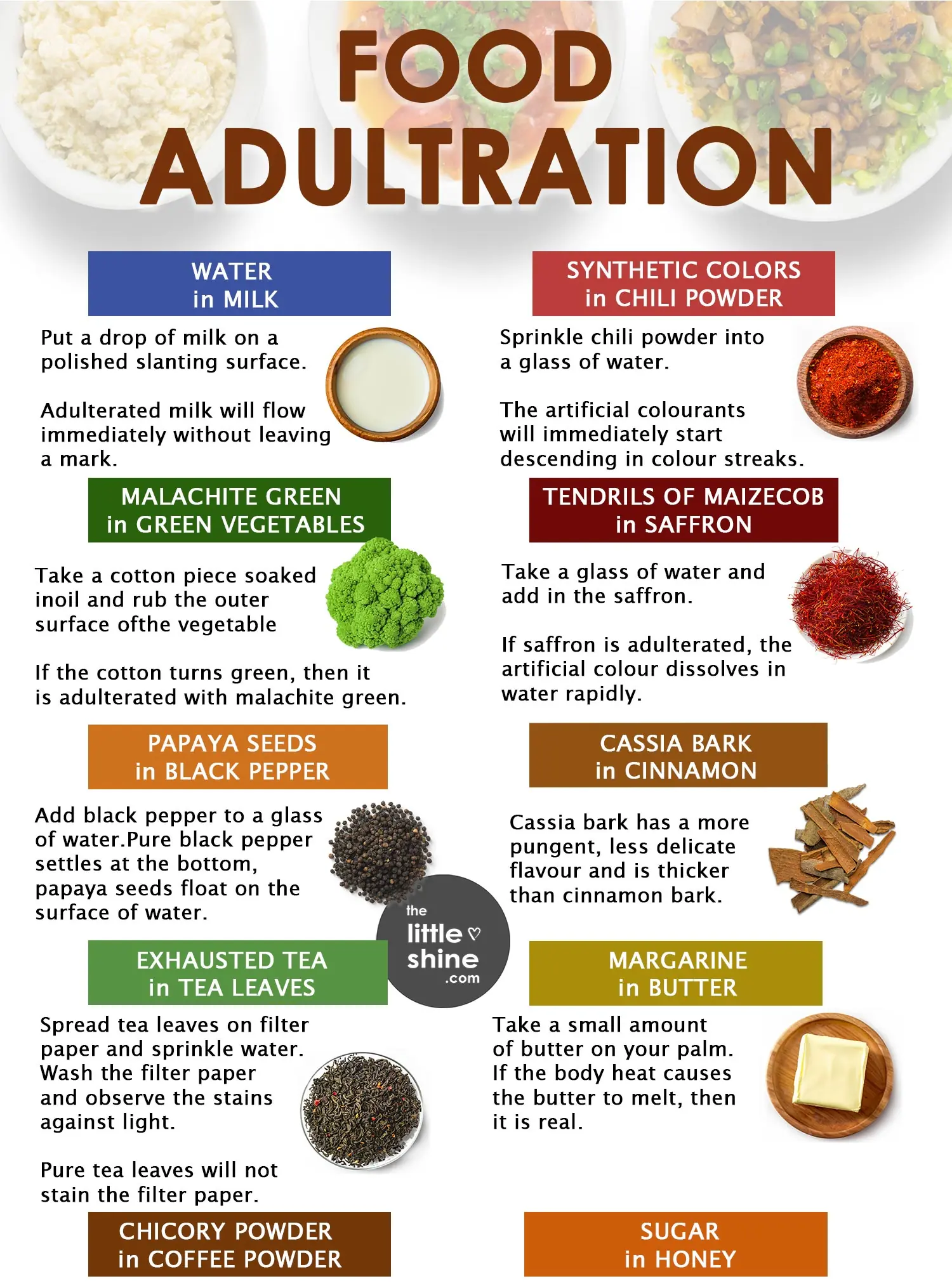
Adulterant: Water
Detection Method:
To check if your milk is adulterated, place a small amount on a polished, slanted surface. Pure milk will leave a white trail as it slides down, while adulterated milk will flow smoothly without leaving a trace.
Adulterant: Margarine
Detection Method:
Place a small amount of butter on your palm. If it melts with your body heat, it’s pure. Margarine, however, will remain solid and not melt easily.
Adulterant: Excess bran
Detection Method:
Sprinkle some wheat flour into a glass of water. Any excess bran will float on the surface, indicating adulteration.
Adulterant: Dried papaya seeds
Detection Method:
Dried papaya seeds are oval and smaller than black peppercorns. If you notice any that are shrunken or have a different shape, they are likely papaya seeds.
Adulterant: Colored sawdust
Detection Method:
Add turmeric powder to a glass of water. Sawdust will float, while pure turmeric will settle at the bottom.
Adulterant: Cassia bark
Detection Method:
Cinnamon sticks, made from cinnamon bark, are thin and can be rolled easily. They have a tan-brown color and a distinct fragrance. Cassia bark is thicker, reddish-brown, and doesn't roll as easily.
Adulterant: Common salt
Detection Method:
Sprinkle some iodized salt on a slice of potato. If the salt is adulterated, the potato will develop a bluish tint, indicating the absence of iodine.
Adulterant: Colored dried tendrils of maize cob
Detection Method:
Saffron strands are tough and do not break easily. Maize cob tendrils are fragile and will break quickly. Additionally, saffron’s color doesn’t dissolve as easily as the artificial color of maize cob tendrils.
Adulterant: Argemone seeds
Detection Method:
Mustard seeds are smooth and flat, while argemone seeds are rougher in texture. Inspect the seeds to spot the difference.
Adulterant: Sugar syrup
Detection Method:
Add a tablespoon of honey to a glass of water. If it sinks as a lump without dissolving, it is pure honey. Adulterated honey will dissolve in the water.
Adulterant: Margarine
Detection Method:
In a test tube, add a tablespoon of ghee and heat it. Add hydrochloric acid and shake. If the mixture turns pink, it indicates the presence of margarine in the ghee.
Adulterant: Mixed with other oils
Detection Method:
Place a small amount of coconut oil in the refrigerator. Pure coconut oil will solidify, while any adulterants will remain liquid.
Adulterant: Chicory
Detection Method:
Sprinkle coffee powder into a glass of water. Coffee will float, while chicory will sink quickly and leave behind a trail of color due to its caramel content.
Adulterant: Exhausted tea
Detection Method:
Place some tea leaves on a filter paper and wet them. If the tea leaves are adulterated with coal tar dye, the filter paper will stain. Washing the paper under water and viewing the stain in the light will show if the tea leaves contain artificial color.
Food adulteration is an unfortunate reality, but with these simple and effective home tests, you can easily detect common adulterants in food products. Whether you’re concerned about the purity of your milk, honey, or spices, these tests can help ensure the safety of what you consume. However, always be cautious and consult a healthcare professional if you suspect that your food has been adulterated, as some adulterants can pose serious health risks.

Pasta dishes are loved worldwide, and the sauce makes all the difference. Here are 10 popular pasta sauces and tips on what types of pasta, ingredients, and wines pair best with each.
Liver health is crucial to overall well-being, and several herbs may help support and protect the liver. Here are the 10 most effective herbs for liver health, along with the necessary precautions.

Even with just 10 minutes to spare, you can tackle a variety of cleaning tasks that will make your home look fresh and tidy. Here are 10 things you can clean in 10 minutes or less!

From turmeric to magnesium, explore 9 home remedies that are supported by scientific research, offering natural solutions to common ailments like pain, inflammation, and digestion issues.
Pesto is a versatile and flavorful sauce that adds a fresh touch to any dish. Here are 6 easy-to-make pesto recipes, each offering a unique twist on the classic.

A balanced diet is key to maintaining optimal health. Learn how specific foods support the health of various organs and systems, from your heart to your hair.

Craving a quick dessert? Mug cakes are the perfect solution for satisfying your sweet tooth in minutes, with these 7 easy-to-make recipes that deliver amazing results.

Good sleep is essential for maintaining physical and mental health.


Baking is both an art and a science, and understanding the right ratios of ingredients can be the difference between a perfectly baked treat and a failed attempt. Here’s a guide to help you nail your baking recipes by understanding the key ratios involv

Dealing with emotions effectively is crucial for maintaining mental and physical health. Whether it's frustration, anger, sadness, or happiness, understanding and managing these feelings can enhance your overall well-being.
Many popular beverages contain more sugar than you might think, and it's important to understand how much sugar you're consuming to avoid the negative health impacts.

Tired of pests around your house? These natural, homemade bug repellents can help you eliminate ants, mosquitoes, cockroaches, and other insects without the use of harsh chemicals.

Looking for a healthy, refreshing drink to enjoy this summer? Here are 6 delicious iced tea recipes packed with health benefits that you can easily prepare at home!
Discover the amazing health and beauty benefits of 10 powerful herbs that go beyond adding flavor to your food and can improve overall well-being.


A boy’s curious question during a school presentation on snakes sparked a powerful conversation about ethics, kindness, and how one simple inquiry can inspire change.

After almost a year apart, seeing my husband and daughter reunited stirred a storm of emotions—pa!n, hope, and the difficult journey of moving on.

A little boy’s innocent dream to become a doctor takes on deep meaning when he reveals the first person he wants to save—his ailing grandpa. A story of hope, love, and the power of belief.

After a tough morning, a kind police officer’s words to my withdrawn son sparked hope and reminded me that sometimes, a stranger’s kindness is exactly what we need.

For 80 years, my grandma drank a glass of wine every night. Last night, she revealed the heartbreaking story behind it—a journey of survival, courage, and resilience.

A heartwarming small-town mailman becomes the center of a chilling mystery when unexpected letters arrive. Discover the suspense, hidden secrets, and a surprising twist that changes everything.

Inigo Pascual opens up about the invaluable guidance he receives from his father, celebrated actor Piolo Pascual, especially when tackling challenging dramatic scenes in his acting career.

In a surprising turn of events, Kapuso actor David Licauco shares his unique connection with the iconic reality show, 'Pinoy Big Brother.'


Ruffa Gutierrez’s heartfelt birthday greeting for boyfriend Herbert Bautista melts hearts online. See how their quiet yet meaningful moments captured the attention of many fans.

Atasha Muhlach steps away from the popular noontime show ‘Eat Bulaga’ due to scheduling conflicts with her lead role in the upcoming series ‘Bad Genius.’ Find out what’s next for the rising star.

Vincent Co reportedly deeply in love with Bea Alonzo — sources reveal

David Licauco opens up about his unforgettable experience inside the "Pinoy Big Brother" house, sharing revelations, gratitude, and a surprising confession about his journey in the reality show.

Ashtine Olviga opens up about her chemistry with Andres Muhlach in their new TV series and shares surprising insights about his personality, generosity, and humility despite his famous lineage.

After more than a week of silence and concern, Vivamax star Karen Lopez opens up about her absence, apologizing and sharing her journey toward mental and emotional recovery. Read her heartfelt message here.


A woman’s quiet struggle with grief and depression went unnoticed until her dog saved her life. This touching story of love, loyalty, and family highlights the importance of being there for those who need it most.

While Bea Alonzo and billionaire businessman Vincent Co continue to make headlines due to their recent outings, reports about a potential engagement in Spain have emerged. However, neither Bea nor Vincent has confirmed the nature of their relationship or

Apple cider vinegar is a simple, natural way to reduce age spots and restore a more even skin tone - right from your kitchen.
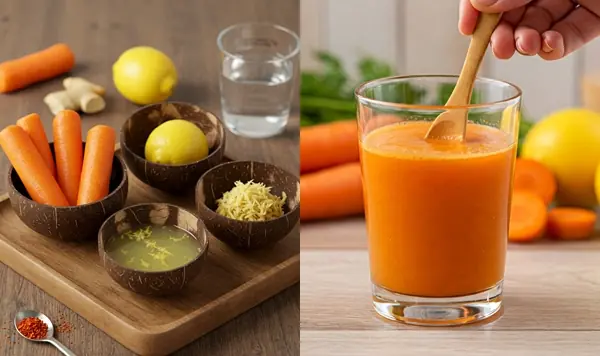
Looking for a fast, natural way to burn fat without intense diets or workouts This carrot and lemon drink may help you lose up to 10kg in 1 month when used consistently.